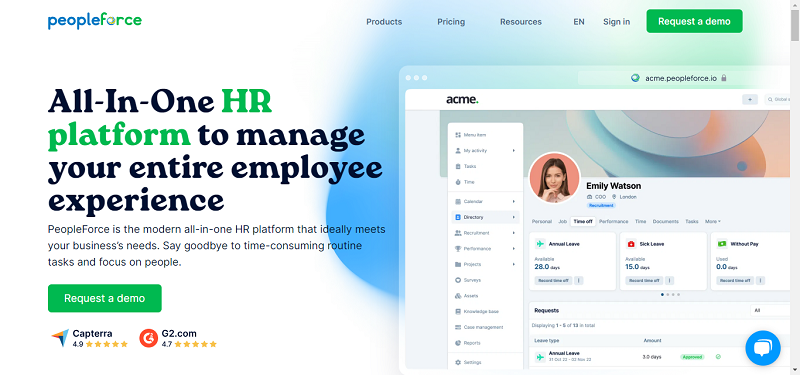Before strapping themselves into the cockpit of a jet airplane, most reasonable people would want to have a pretty detailed idea of what was involved in flying a plane. They’d want to know how the controls worked and how to respond to the variety of situations they could expect to encounter in flight. They would understand that once airborne, things happen much too fast to study up on what to do in an emergency.
The same could be said about cloud computing: like jet airplanes, cloud computing involves many interrelated systems that need to perform within very exact parameters or risk zooming out of control at extremely high speeds. Unfortunately, there are IT directors today who are strapping themselves into a cloud computing strategies without fully understanding what has to happen to deliver IT services to their business users without falling out of the sky.
Cloud computing technology today makes it possible for pools of IT resources to respond intelligently and dynamically to each other and to the changing demands of business requirements. But, as advanced as it is, there is no intelligence inherent in any cloud computing technology. The intelligence to inform the millions of interactions involved in a typical cloud environment needs to come from the people who design, manage and support it.
An ITIL-based ITSM strategy is the most effective framework to upload your collective intelligence into the increasingly educatable technologies in your extended IT environment. The faster you go, the more critical it is to be able to view and govern where you’re headed.
Based on our experience with a range of organizations, here are five reasons ITSM should be a part of every cloud strategy:
1. IT Efficiency – As the delivery of IT services is increasingly pushed to the cloud by business units with tailored needs – often distributed to different Service Providers or service models – the governance of incident and change management becomes critical to creating a cloud strategy that maintains the efficiencies and speed gained by moving to the new model in the first place.
2. Business Alignment – With more service providers targeting individual business units rather than the IT department, IT must be able to quickly assess the impact of new service offerings and how they can be tied into the company’s overall IT strategy.
3. Automated Service Management – IT must manage what it cannot automate, therefore, the automation of key processes in governing the evolution of a company’s service delivery options is critical. Without an ITSM strategy, IT, while trying to control chaos, can become the very bottleneck that its new delivery model exists to resolve.
4. Change Management – IT pros are accustomed to being the controllers of their technology kingdoms, but as cloud models evolve, direct control over every portion of the service delivery landscape lessens. As a result, it is even more critical today to be able to manage and track changes to ensure that what’s working in an in-house data center and what’s being delivered by a host of disparate service providers is all working seamlessly, catching and correcting issues that could cause serious performance degradations or other significant problems before they occur.
5. Self Service – Making it possible for end users to request IT services for themselves is a key component of the cloud computing model. Self-service does not mean instant gratification, however. You need to have things like chargeback and/or show back so you can demonstrate that you are spending money by serving yourself these corporate assets. Without appropriate parameters built into an ITSM strategy, self service provisioning can be like the wild West all over again.
It used to be that only large organizations could justify the cost of implementing ITSM. The available tools were expensive to install and often overwhelming to implement. A new wave of system management toolsets available as software-as-a-service (SaaS), however, has now made developing and implementing an ITSM strategy as doable as it is critical. The current front runner among SaaS ITSM toolsets is ServiceNow, but there are others like Cherwell, and EarlyVista, as well as SaaS applications from the more traditional service management vendors like BMC, HP and IBM.
A key advantage of the new generation of ITSM toolsets is that all the necessary functions are available within a fully integrated application. An ITIL-based framework already exists. You don’t have to spend all your time, and money building it. You can begin by adopting appropriate best practices in phases and tweak them as your strategy evolves.
A key hazard in the development of ITSM strategy is the tendency of IT professionals to seek out technical detail and dive in. Loosing the forest for the trees is probably the most common source of failure of ITSM strategies. The goal of a well designed ITSM strategy is not just to keep technologies interacting intelligently. The ultimate goal is delivery IT services that directly support and enhance an organization’s business objectives, or, in the case of governmental agencies, their mission to serve. ITSM is not just for IT.
This is where having a clear vision of where you want to go and the leadership to execute it is critical. It takes a resolute, guiding hand to steer an ITSM strategy through the inevitable turbulence of special interests as IT and business stakeholders pursue their own objectives.
On the positive side, the challenge of developing a comprehensive ITSM strategy has within it a unique opportunity to develop an environment of active collaboration between business and IT stakeholders that reflects the intelligent, interactive, collaboration you are creating between technologies within your extended IT environment.
In my next column, I would like to map out the stages you need to complete to design and implement an ITSM strategy that will ensure that when you take off for the cloud, you know where you are going and how to get there safely, securely and effectively.
By Mike Alley





